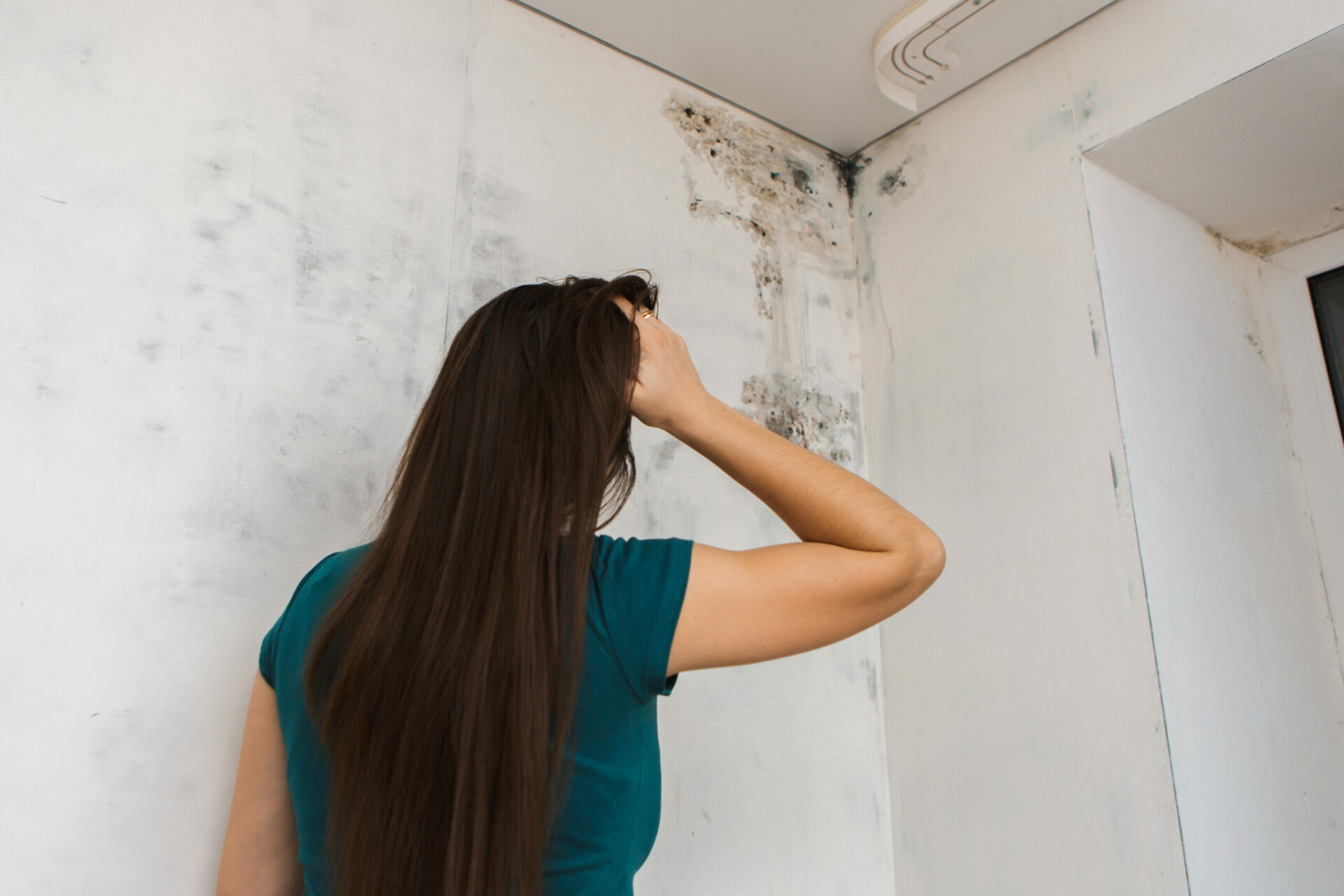
Transparent Transactions: Unveiling Property Issues with Illinois Residential Real Property Disclosure
August 5, 2023, by Jessica
The Illinois Residential Real Property Disclosure Act plays a crucial role in upholding transparency and empowering both parties involved in real estate deals in Illinois.
Under this law, sellers must disclose important information about the property they’re selling, including any known material defects, the presence of lead paint, and radon levels. The aim is to emphasize the importance of this Act in promoting transparency throughout the real estate buying process.
If you plan to purchase residential property in Illinois, you must know the Act.

Latent Defects in Real Estate
Latent defects are problems within a property that are hidden or concealed, which may not be immediately obvious to a prospective buyer during a visual inspection. These defects require specialized knowledge or further investigation to detect.
Examples of latent defects in Illinois real estate:
a. Undisclosed structural issues:
This may include problems with the foundation, load-bearing walls, or structural elements that can affect the stability and safety of the property.
b. Hidden water damage:
Water damage that is not visible to the naked eye, such as leaks behind walls or in hidden areas, can lead to structural deterioration, mold growth, and other related issues.
c. Concealed pest infestations:
Infestations of pests like termites, rodents, or insects that are not readily visible can cause significant damage to the property and impact its structural integrity.
d. Unresolved mold problems:
Mold growth within walls, ceilings, or hidden areas can pose health risks and cause damage to the property if left untreated.

Material Defects in Real Estate
Material defects in real estate are significant issues or flaws within a property that have a substantial impact on its value, functionality, or safety. These material defects are generally observable and can be identified through visual inspection, professional assessments, or disclosure reports furnished by the seller.
Examples of material defects in Illinois real estate:
a. Significant foundation damage:
This may include cracks in walls, floors, and the foundation itself, indicating ongoing movement and stressing building materials. Settling causes uneven floors, misaligned doors/windows, and visible gaps in walls and ceilings. Foundation shifting results in lateral movement, leading to bowing walls and structural instability. Uneven floors and walls indicate severe structural issues. Misaligned doors/windows due to a damaged foundation can make them difficult to operate.
b. Roof leaks affecting the property’s integrity:
Roof leaks cause extensive water damage, affecting insulation, electrical systems, drywall, and wooden structures. Prolonged exposure weakens materials, leading to warping and compromising the building’s integrity. Moisture fosters mold growth, posing health risks to future occupants. Water infiltration into electrical systems can cause short circuits and increase fire risk. Water-soaked insulation reduces energy efficiency, raising heating and cooling costs. Additionally, roof leaks create unsightly stains, diminishing the property’s aesthetic appeal and value.
c. Faulty electrical or plumbing systems:
Faulty electrical or plumbing systems in a property can pose safety hazards and operational issues, affecting functionality and potentially risking the well-being of occupants. Outdated or poorly installed systems may lead to electrical malfunctions, water leaks, low water flow, water contamination, and costly repairs. Electrical problems can cause power outages and fire risks, while water leaks can damage the structure and promote mold growth. Inadequate water flow and sewer backups create inconvenience and unsanitary conditions.
d. Presence of hazardous materials, such as asbestos or lead-based paint:
The presence of hazardous materials, such as asbestos or lead-based paint, in a property poses significant health risks to its occupants and necessitates specialized handling and remediation for a safe living environment. Asbestos-containing materials can release harmful fibers when disturbed, leading to respiratory issues and even cancer. Similarly, lead-based paint can cause lead poisoning, especially in children, resulting in developmental and neurological problems.
Property Disclosure Forms Required in Illinois
In Illinois, home sellers must provide written information about the quality, safety, and healthiness of their residential real estate. To fulfill this requirement, sellers must complete the following forms outlining the property’s condition.
The Illinois Residential Real Property Disclosure Form:
The Illinois Residential Real Property Disclosure report form is a standardized document that sellers are required to complete and provide to buyers during the real estate transaction. The disclosure form also serves as a means for sellers to disclose specific information about the real property’s condition, history, and potential issues.
Key sections and information covered in the form:
a. Property condition and history:
This section of the form requires sellers to provide information about the overall condition of the property, including any known defects, damage, or issues. It may also include details about the property’s age, previous renovations, or any significant events related to the property.
b. Structural, mechanical, and environmental details:
In this section, sellers must disclose information about the structural components of the property, such as the foundation, walls, and roof. It may also cover details about mechanical systems like HVAC, plumbing, and electrical. Additionally, any environmental considerations, such as the presence of hazardous substances or environmental hazards, should be disclosed.
c. Past repairs, renovations, or insurance claims:
Sellers are required to disclose any past repairs or renovations conducted on the property. This disclosure report includes information about major repairs, renovations, or insurance claims that have occurred on manufactured home during their ownership. Such required disclosures provide buyers with insights into the property co owner’s history and potential issues that have been addressed.
d. Any known presence of lead paint or radon gas:
The disclosure report form specifically addresses the presence of lead paint or radon gas, two potential hazards in a residential property. Sellers must disclose any actual knowledge or testing results regarding the presence of lead paint or elevated radon levels. This disclosure report ensures that buyers are aware of potential health risks associated with these substances.
e. Buyer’s right to review and request additional information:
The full disclosure statement form acknowledges the prospective buyer’s right to review the Illinois disclosure report requirements and request additional information or clarification from the seller. This ensures that prospective buyers have the opportunity to thoroughly review the provided information and seek any necessary clarifications before finalizing the transaction.
Completing and submitting the Illinois Residential Real Property Disclosure form is an integral part of the process in real estate transactions in Illinois. It allows sellers to fulfill their legal obligations by providing comprehensive information about the property, while also empowering buyers to make informed decisions based on full transparency.
Ensuring Lead Paint Disclosure in Illinois:
Lead paint poses significant health risks, especially to young children and pregnant women. Exposure to lead can lead to serious health issues, including cognitive and developmental impairments, neurological damage, and behavioral problems. In Illinois, the state recognizes the importance of protecting individuals from lead exposure and has implemented the Illinois Lead Poisoning Prevention Act to address this concern.
The Illinois Lead Poisoning Prevention Act is crucial legislation aimed at reducing the risks associated with lead exposure. It establishes requirements for lead paint disclosure and outlines the responsibilities of sellers in transactions.
Requirements for lead paint disclosure in Illinois:
a. Testing for lead-based paint in properties built before 1978:
In Illinois, sellers are obligated to conduct testing for lead-based paint in residential properties and manufactured home constructed prior to 1978. This requirement is crucial because manufactured homes built before this year are more likely to contain lead-based paint, as its use was restricted in residential properties and manufactured homes after that date.
b. Providing written disclosures about lead-based paint to buyers:
Sellers are required to provide written disclosures about the presence of lead-based paint to potential buyers. The written disclosure report should include information about the known presence of lead-based paint in the property, including its location and condition. This allows buyers to make informed decisions and take appropriate measures to minimize potential lead exposure.
c. Offering a ten-day opportunity for lead inspections:
The Illinois Lead Poisoning Prevention Act grants buyers a ten-day opportunity to conduct lead inspections if they wish to do so. This provision ensures that buyers have sufficient time to hire professionals to assess the property for lead hazards before finalizing the purchase. The ten-day period offers an additional layer of protection for buyers and further promotes transparency in transactions.
By adhering to the requirements outlined in the Illinois Lead Poisoning Prevention Act, sellers contribute to a safer living environment and help protect the health and well-being of buyers. The act emphasizes the importance of lead paint disclosure report, empowering buyers to make informed decisions while taking appropriate measures to address any potential lead hazards. It serves as a crucial component of ensuring transparency and safety in transactions involving properties built before 1978.
Radon Disclosure in Illinois:
Radon is a radioactive gas that occurs naturally in the environment and can seep into buildings, including residential properties. Prolonged exposure to elevated levels of radon gas can pose significant health hazards, including an increased risk of lung cancer. Recognizing the importance of radon awareness and mitigation, Illinois has implemented the Illinois Radon Awareness Act to protect its residents.
Overview of radon gas and its health hazards: Radon gas is produced by the natural decay of uranium found in soil, rocks, and water. It is colorless, odorless, and tasteless, making it difficult to detect without proper testing. When radon gas enters a building and becomes trapped, it can accumulate to harmful levels. Long-term exposure to elevated radon levels increases the risk of lung cancer, particularly for smokers or individuals with a history of smoking.
The Illinois Radon Awareness Act is a legislation aimed at raising awareness about radon gas and implementing measures to reduce its health risks. The act emphasizes the importance of radon testing guidelines, disclosure report, and mitigation in residential properties.
Requirements for radon disclosure in Illinois:
a. Testing for radon levels in residential properties:
In Illinois, sellers are encouraged to conduct radon testing in residential properties. Although testing is not mandatory, it is strongly recommended to ensure the safety and well-being of occupants. By testing for radon levels, sellers can identify potential radon hazards and take appropriate actions to mitigate the risks.
b. Providing radon test results to buyers:
If radon testing is conducted, sellers are required to provide supplemental disclosure of the radon test results to potential buyers. This disclosure report allows buyers to make informed decisions regarding the purchase of the property, taking into account the radon levels and potential mitigation measures that may be necessary.
c. Offering information on radon mitigation measures:
Sellers are encouraged to provide information on radon mitigation measures available to address elevated radon levels. This may include recommendations for certified radon mitigation professionals who can install mitigation systems to reduce radon concentrations in the property. By offering this information, sellers enable buyers to take proactive steps to ensure a safe living environment.
The Illinois Radon Awareness Act aims to increase awareness of radon gas and its potential health risks. By promoting radon testing, disclosure report of test results, and providing information on mitigation measures, the act ensures transparency and empowers both sellers and buyers to make informed decisions regarding radon in residential properties.

Conclusion
Illinois’s Residential Real Property Disclosure Act plays a crucial role in the real estate industry by promoting transparency and informed decision-making.
It requires sellers to disclose any material or latent defects and provide information on lead paint and radon gas. This enables buyers to make well-informed choices and ensures their interests are protected.
It is vital for all parties involved in real estate transactions, such as buyers, sellers, and real estate professionals, to consider these disclosure forms as an essential aspect of the deal. Meanwhile, buyers should carefully review the disclosure documents and ask for further clarification.
Sellers, below is a humorous fictional story that illustrates the importance and, sadly, the consequence of not complying with this law. As the Allstate commercial says, you’ll want to avoid mayhem like this …
Once upon a frosty winter in Illinois, there was a condo with a little secret that would turn into a big problem.
Unbeknownst to the buyer, Mr. Smith, the seller, Mrs. Johnson, had neglected to disclose a rather “mousy” issue during the sale. Mrs. Johnson was notorious for being a bit forgetful, but this oversight would prove to be more than just a memory slip-up.
As the cold winds howled outside, Mr. Smith moved into his new condo, excited about his purchase and ready to embrace his new home. Little did he know that he was not alone in his excitement.
It turned out that the condo was also a winter retreat for an extensive rodent community that had taken up residence.

At first, Mr. Smith noticed some faint scratching noises behind the walls, but he brushed it off, assuming it was just the building settling in the chilly weather.
However, as the days passed, the scratching grew louder, and he started to spot little droppings scattered around his home. It wasn’t long before he realized he had a full-blown rodent infestation on his hands.
Panicked and frustrated, Mr. Smith reached out to Mrs. Johnson, seeking an explanation and help with the pest problem. Mrs. Johnson was startled by the news, and in her defense, she claimed she had no idea about any rodent infestation during her time in the condo.
She tried to convince Mr. Smith that the pesky critters must have invaded after she moved out.
But Mr. Smith wasn’t buying it. He remembered that the Illinois Residential Real Property Disclosure Act required sellers to disclose any material defects, and a significant rodent infestation certainly qualified.
Feeling betrayed and deceived, Mr. Smith decided to take matters into his own hands.
He consulted with a real estate attorney and decided to file a lawsuit against Mrs. Johnson to recover damages for the rodent-related expenses he incurred. The lawsuit caught Mrs. Johnson off guard, and she soon realized she was in quite a “mousey” predicament.
In court, the evidence of the rodent infestation was overwhelming, with photos of droppings, chewed wires, and even brazen rodents caught dancing on video throughout the condo.
The judge couldn’t help but suppress a smile at the absurdity of the situation but recognized the seriousness of the matter.
The attorney representing Mr. Smith skillfully argued that the failure to disclose the infestation was a clear violation of the Illinois Residential Real Property Disclosure Act.
He presented all the relevant documents, highlighting the importance of transparency in real estate transactions.
Mrs. Johnson, on the other hand, struggled to defend her case. She had no evidence to prove that she wasn’t aware of the rodent infestation when she sold the condo, and her forgetful nature worked against her.
The judge found her lack of disclosure and negligent behavior concerning, and it became evident that her memory lapse had cost Mr. Smith, dearly.
In the end, the gavel came down, and the judgment was in favor of Mr. Smith. The judge awarded him the necessary funds to cover the cost of an exterminator, repairs for the damage caused by the rodents, and even a little extra for the inconvenience he had endured.
As Mr. Smith emerged victorious from the courtroom, he couldn’t help but feel a sense of satisfaction and a sprinkle of humor at the absurdity of the situation.
He learned a valuable lesson about the importance of transparency in real estate transactions and that even in the midst of a “mousey” mess, justice could prevail.
And so, the tale of the forgotten rodents in the condo served as a reminder to all sellers that honesty is always the best policy, especially when dealing with pesky infestations and determined buyers.
And as for Mrs. Johnson, well, she finally put sticky notes all around her new place to remember to be honest about everything, no matter how “cheesy” it might seem.
